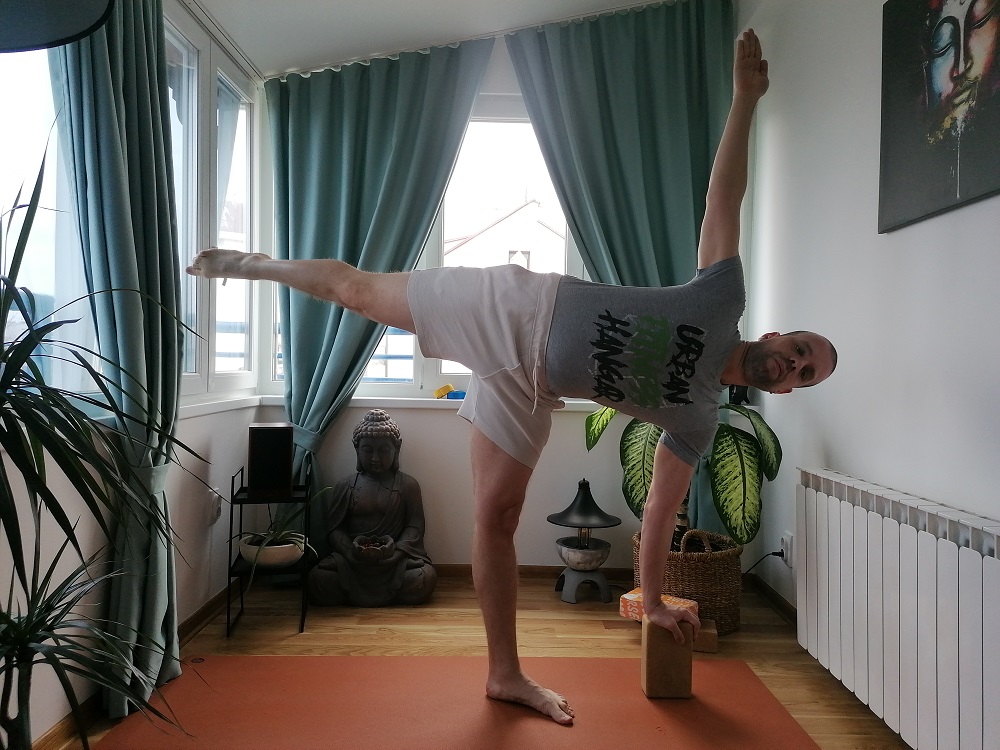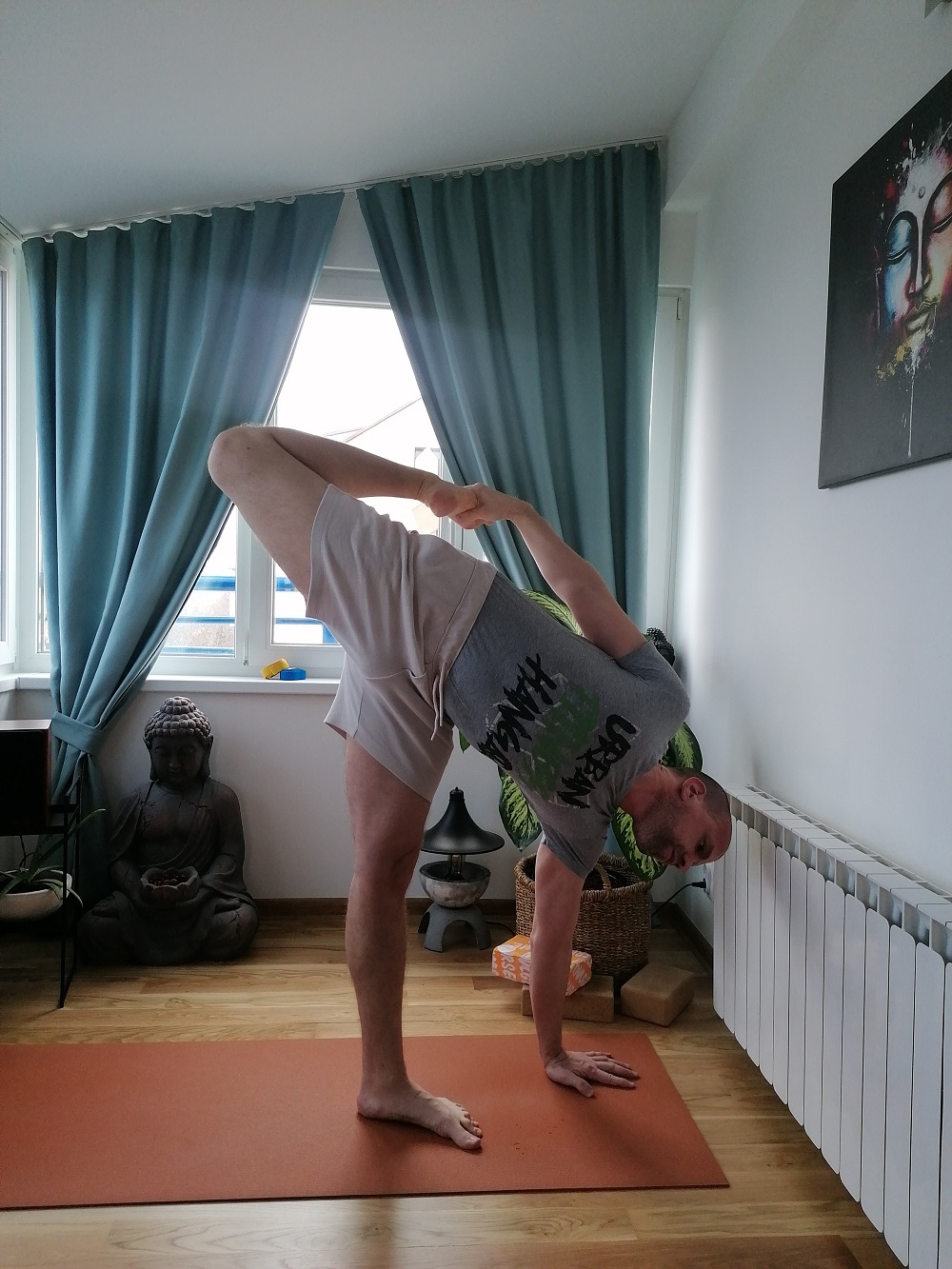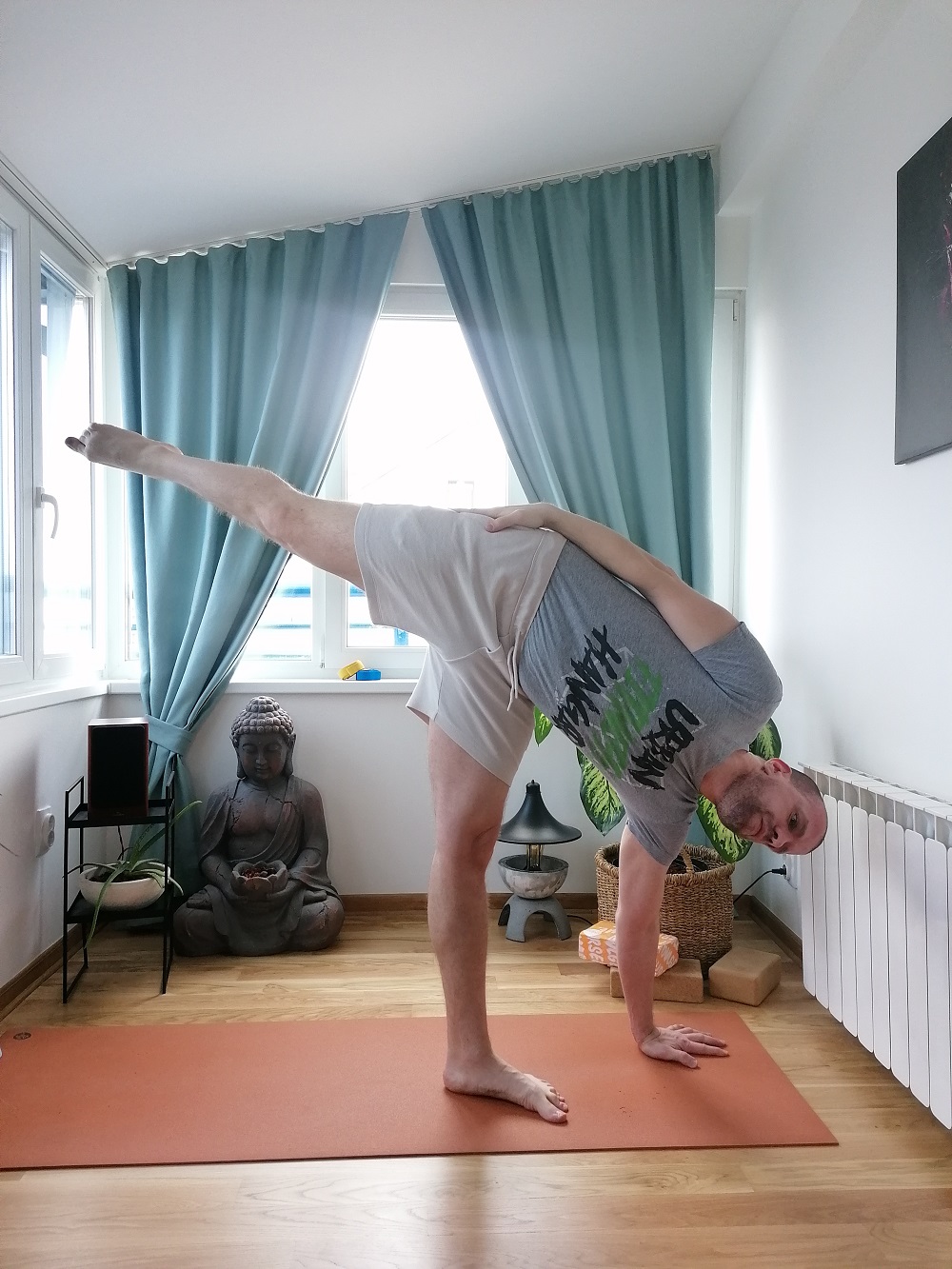The Half Moon Pose is a standing balancing yoga pose that offers a variety of benefits. The pros include improved balance, flexibility, and strength. The Half Moon Pose can also aid in improving digestion and relieving stress.
There are several variations of the Half Moon Pose, each with its own unique benefits. This piece focuses on explaining the Half Moon Pose, its variations, and the benefits each one offers.
What is the Half Moon Pose(Ardha Chandrasana)?
Demanding suppleness, Ardha Chandrasana, is a mediocre-level standing balance yoga pose. Its name is constituted from three Sanskrit words: Ardha, meaning “half,” Chandra, which is “moon,” and asana, meaning “pose.” Additionally, the pose resembles a crescent moon, which further suggests the name.
This challenging balancing pose tests the strength of your whole body but mainly the ankles, hamstrings, thighs, and core. It’s an excellent way to build strength in your legs and improve balance.
How to Perform the Ardha Chandrasana Pose?
The pose may seem intricate. It can be challenging on the initial tries but if you follow these guidelines correctly, you will be able to do it with ease. Here are the steps to perform the Half Moon Pose:
- Start in Warrior II Pose, with your left leg behind you and your right leg pointing forward.
- In this pose, your hands are raised parallel to the mat and are spread out at shoulder level.
- With the right hand, reach down to the ground in line with your toes (softly bend your knee a little) while your left hand is placed on your hip.
- Bring your body weight on the right leg and slowly lift your left leg.
- Position your right hand on the mat (you can also place a block for support). Also, make the right placement of your right hand; it is required to be towards the little toe-side of your right foot.
- Keep your right leg stable and engage the floating left leg by lengthening it behind you, keeping the hips level.
- You can keep the right knee slightly bent as you find balance while taking supports from the right hand on the ground.
- As you find stability, inhale and slowly extend the left arm towards the ceiling.
- Then, slowly look towards the hand raised; you are now in the Ardha Chandrasana pose.
- Maintain the pose for about 6 breaths, keep the knees straight, and maintain the gaze at the top hand.
- To release, exhale and turn your gaze towards the floor. Bend the right knee, lower the left leg, and return to the standing position.
Variations of the Half Moon Pose
Now that we have explored the fundamentals and the correct procedure to perform the Ardha Chandrasana, let’s steer towards the variations. The Half Moon pose can be performed with or without props and there are many variations to choose from depending on your level of experience and comfort. Here are some variations you must try:
Half Moon Pose with Block
This variation is ideal for starters who lack hip flexibility. The procedure is the same but it uses a prop (block) to support the bottom hand. It facilitates better alignment and balance. You can also use a chair in place of the block.
One Knee on the Floor Pose
This is a great variation for beginners as it doesn’t require much flexibility. The process is the same as the regular Half Moon Pose. But the difference lies in the fact that the bottom knee is placed on the floor for support.
Sugarcane Pose
This is an advanced variation of the Half Moon Pose and requires a lot of flexibility in the hips. In this variation, you first need to find a solid balance of the half-moon pose. Grasp the left foot’s big toe with the left hand, put the right hand on the floor, and keep your gaze there as well.
Half Moon Pose Arm at Body
This variation is for those who lack arm strength or balance. The process is the same as the regular Half Moon Pose but here you don’t lift the arm all the way up. Instead, you place it on the body. You can place it on the waist or the thigh, whatever is comfortable for you.
Revolved Half Moon
Now, this one brings a twist to the Half Moon Pose. In this variation, you need to revolve your torso to the right while in the Half Moon Pose and switch hands. Performing this variation stretches the muscles and opens up the chest.
Bound Revolved Half Moon
Taking the revolved half-moon a notch up, this variation is a tough one as it adds the stretch of sugarcane pose with the revolved half-moon. Here, you first find a solid base of the revolved half-moon pose. Then, proceed to grab the left big toe with the right hand while the right left is placed on the floor.
Advantages of Practicing Half Moon Pose
The Half Moon Pose comes with a plethora of benefits. Some of these merits are listed below:
Physical Merits
The Half Moon Pose is excellent for coordination and balance.
It also helps to power the ankles, thighs, and core muscles.
The pose also helps to improve flexibility in the hips and spine.
Opens the chest, shoulders, and all the muscles along the sides of the body.
It also aids in improving digestion.
Mental Merits
The Half Moon Pose enables enhanced focus and concentration.
Gets rid of anxiety and stress.
It also regulates blood circulation and energy levels.
The Half Moon Pose is a great pose for overall mind-body balance.
Contradictions to Keep in Mind
Ardha Chakrasana is a great pose but it does come with a few contradictions. Here are some instances when doing this pose is not a good idea:
- Do not attempt this pose if you have high blood pressure, heart disease, or any other heart condition.
- Also, it’s a big no if you are pregnant.
- Performing the pose with a neck injury can increase the pain.
- People suffering from migraines should also avoid this yoga.
Conclusion
We took a detailed look at the Half Moon Pose, its variations, and its benefits. Also, we covered the major contradictions you must know before attempting this pose. Now that you know all there is to know about the Half Moon Pose go ahead and give it a try. As always, be cautious and practice under the guidance of a qualified yoga instructor.










